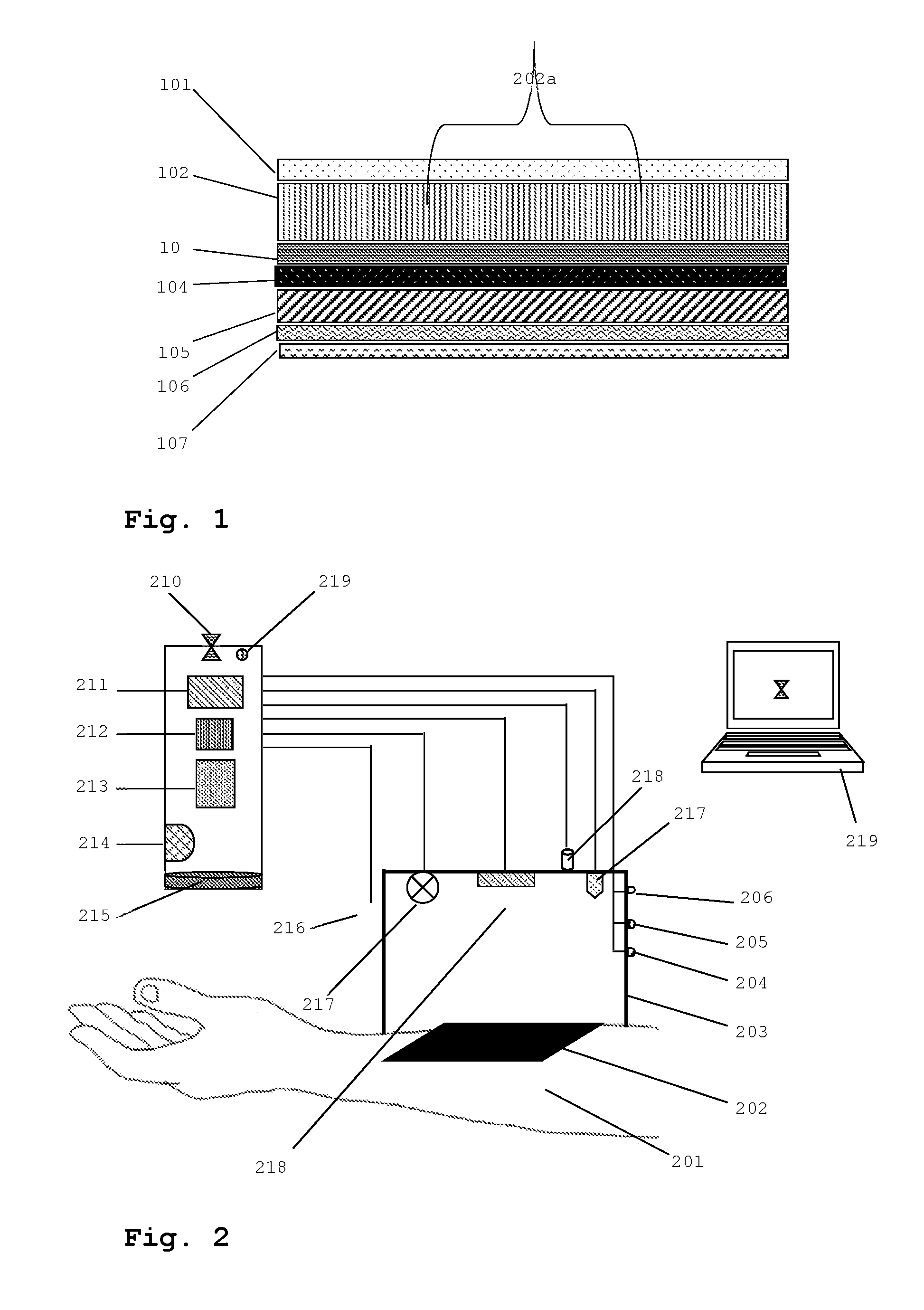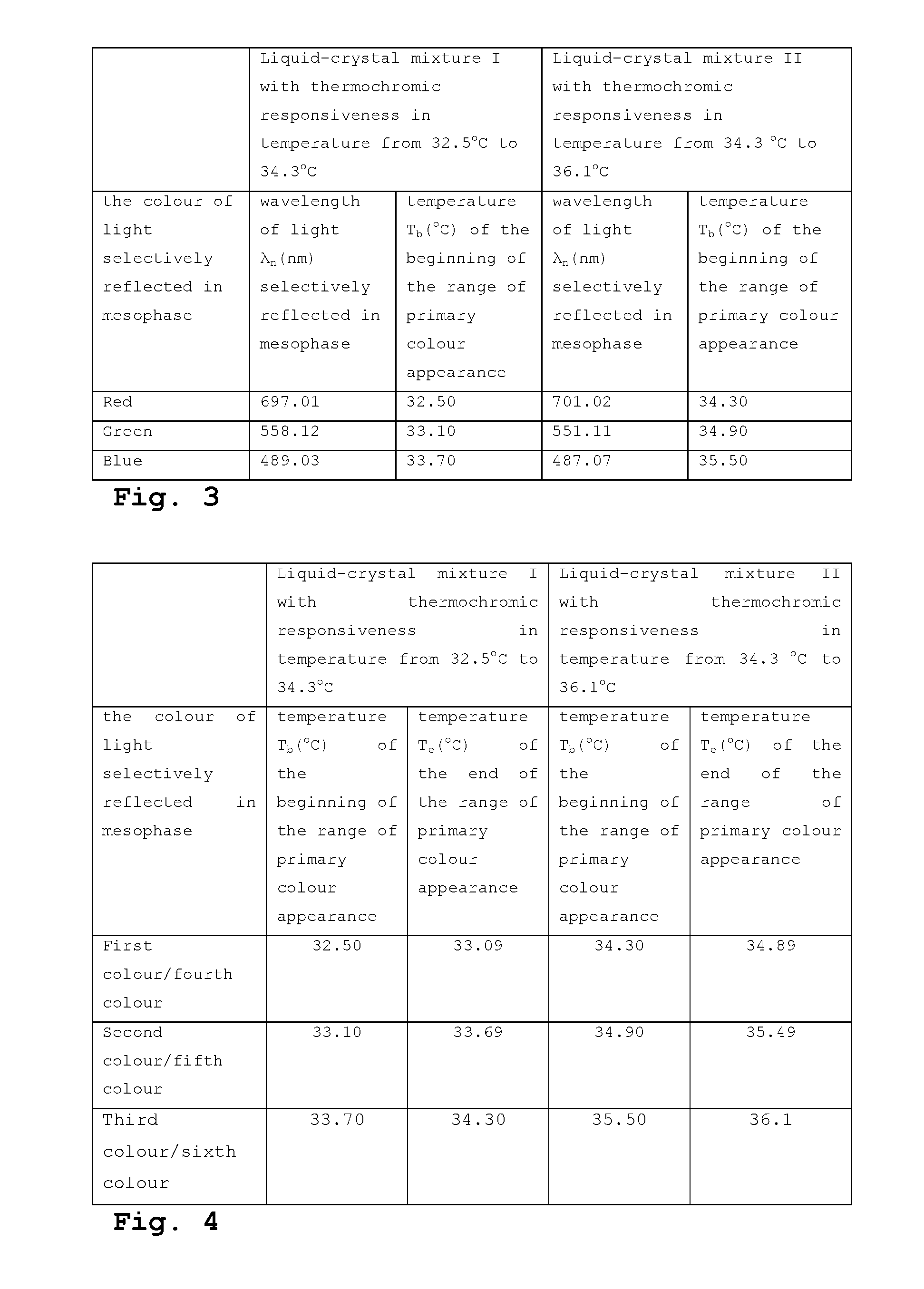Contact thermo-optical structure and its application for non-invasive imaging of histamine-induced hyperthermal subcutaneous reaction magnitude in cutaneous allergic reaction, recording device and method of allergic reaction diagnosis
a technology of thermo-optical structure and contact lens, which is applied in the field of contact thermo-optical structure, can solve the problems of unfounded subjecting of ill patients to these tests, and achieve the effect of good adhesion of the system
- Summary
- Abstract
- Description
- Claims
- Application Information
AI Technical Summary
Benefits of technology
Problems solved by technology
Method used
Image
Examples
Embodiment Construction
[0060]The basic function of a thermo-optical structure according to the invention is the conversion of thermal biological signal, falling within the infrared range, with electromagnetic wave length from 8 μm to 15 μm, generated under the skin in result of vasodilatory thermogeneous histamine reaction, into colour image of temperature distribution on the surface of skin, in the spectral range of visible light with wavelength from 380 to 780 nm.
[0061]The thermo-optical structure according to the invention functions as an intensifier for the image of subcutaneous hyperthermia induced by histamine during the allergic reaction, because of that the local skin temperature increase is associated with a corresponding colour of light selectively reflected in the thermochromic dye layer or in thermotropic mesophase forming the system's screen, and preferably the respective primary colours red, green, blue appear sequentially at every 0.6° C.
[0062]To cover the typical spectrum of temperatures p...
PUM
| Property | Measurement | Unit |
|---|---|---|
| transitional temperature | aaaaa | aaaaa |
| transitional temperature | aaaaa | aaaaa |
| transitional temperature | aaaaa | aaaaa |
Abstract
Description
Claims
Application Information
 Login to View More
Login to View More - R&D
- Intellectual Property
- Life Sciences
- Materials
- Tech Scout
- Unparalleled Data Quality
- Higher Quality Content
- 60% Fewer Hallucinations
Browse by: Latest US Patents, China's latest patents, Technical Efficacy Thesaurus, Application Domain, Technology Topic, Popular Technical Reports.
© 2025 PatSnap. All rights reserved.Legal|Privacy policy|Modern Slavery Act Transparency Statement|Sitemap|About US| Contact US: help@patsnap.com



